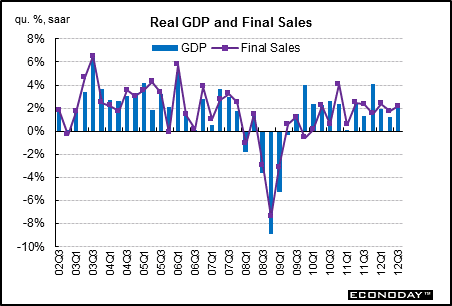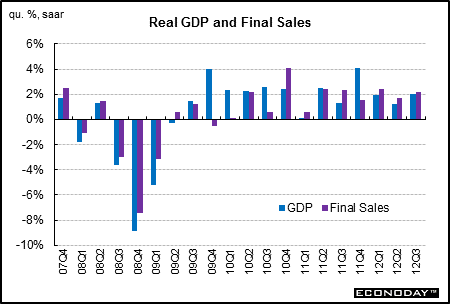
GDP measures total domestic production quarterly. Final sales reflect demand by consumers, businesses, and government. When final sales grow much faster than GDP for at least two quarters, it signals the need to rebuild inventories. That means production increases and so does GDP. Notice that over the long run, real final sales and real GDP grow by roughly the same magnitude.

We now have thirteen consecutive quarters of economic growth—but the pace has been modest to moderate on average with recent quarters softening significantly. The economy is gaining momentum but very gradually. At 2.0 percent, growth in third-quarter GDP came in fractionally higher than expected and above second-quarter growth of 1.3 percent. The problem is that 2.0 percent growth is still anemic. The modest good news was that the quarter was led by final demand which is a positive indication for improving momentum going into the fourth quarter. Final sales of domestic product rose 2.1 percent which marked acceleration from 1.7 percent in the second quarter. An alternate reading that excludes net exports is even stronger with final sales to domestic producers up 2.3 percent versus the prior quarter's 1.4 percent.
While the latest GDP number is an improvement, it was not enough to move unemployment down notably. So, the Fed will not be so excited about the latest reading and loose monetary policy will continue.



Production & Sales •
Inflation •
Federal Reserve Policy •
Interest Rates
|

